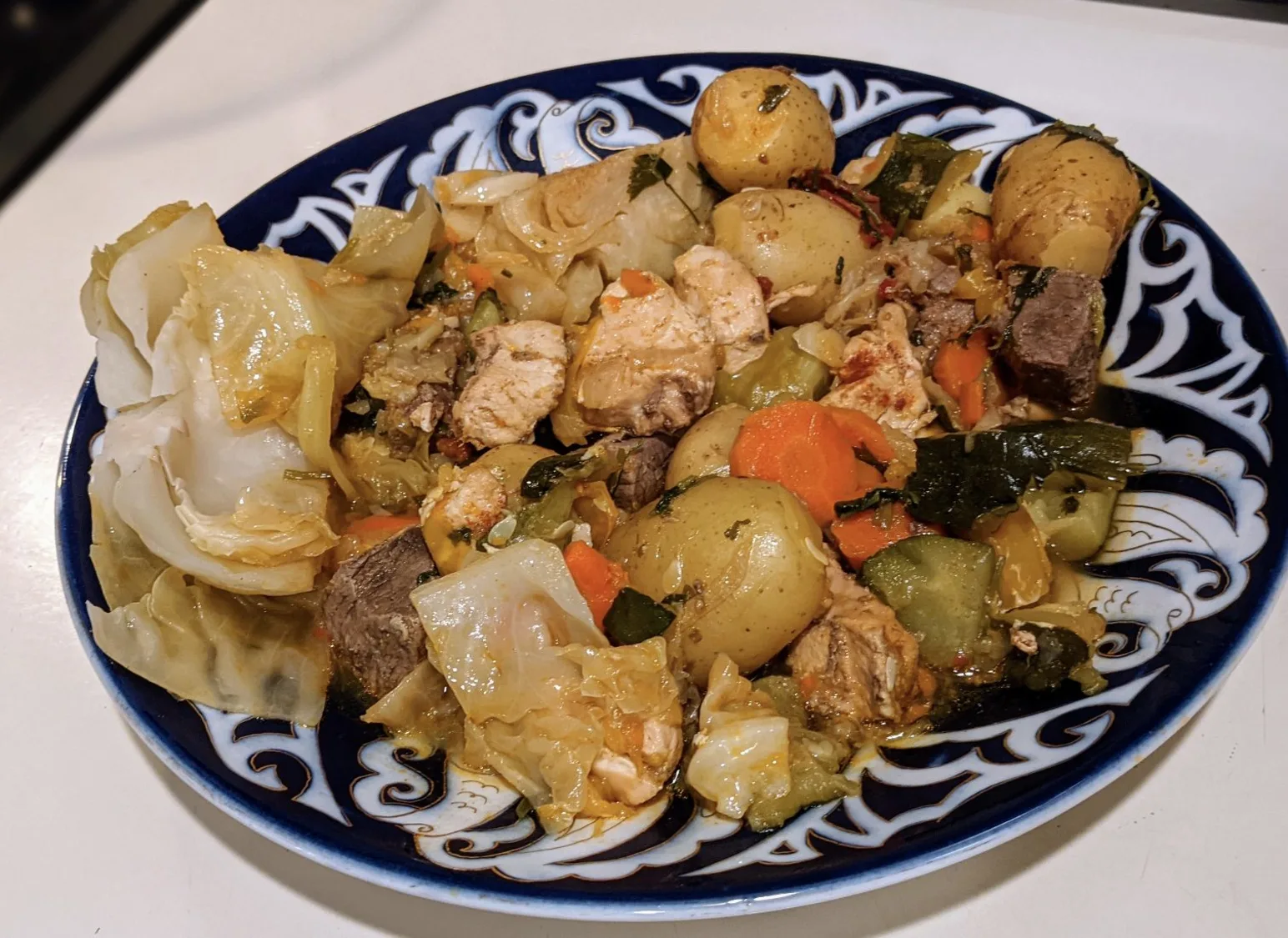
Dimlama (Stewed Meat and Vegetables)
A layered pot dish of meat, vegetables, and potatoes slowly cooked in their own juices.
Ingredients
- •Lamb or beef
- •Potatoes
- •Carrots
- •Onions
- •Cabbage
- •Bell peppers
- •Garlic
- •Spices
Instructions
Prepare Ingredients
Cut meat and vegetables into large pieces
Layer
Layer ingredients in specific order in pot
Cook
Slow cook on low heat until tender
Serve
Serve hot, maintaining layers when plating
Dimlama is a hearty, traditional Uzbek dish that perfectly embodies the country's love for slow-cooked, flavorful meals. The name comes from the cooking method "dimlash," which means "to steam" in Uzbek. This one-pot wonder consists of meat (typically lamb or beef) and various vegetables carefully layered and cooked in their own juices, allowing each ingredient to contribute its unique flavor to the final dish.
Traditionally prepared in a heavy-bottomed kazan (a cast-iron cauldron), dimlama was a favorite among shepherds and farmers who could start the cooking process in the morning and return to a perfectly cooked meal after a day's work. The dish gained popularity throughout Central Asia, with each region adding its own twist to the basic recipe.
The secret to a perfect dimlama lies in the layering technique. Starting with fatty meat pieces at the bottom (which create a natural barrier against burning), followed by onions, carrots, potatoes, cabbage, and other seasonal vegetables. Each layer is seasoned individually, and no additional water is added - the ingredients cook in their own juices, creating a naturally rich and flavorful stew. The pot is sealed tightly and cooked over low heat for about 2-3 hours until everything is tender and infused with flavor.
While the basic recipe remains consistent, many families add their own touches. Some include quinces or apples for a subtle sweetness, while others might add chickpeas or turnips. In some regions, you'll find dimlama made with horse meat, following local traditions. Modern variations might include bell peppers, eggplants, or even sweet potatoes.
In Uzbek homes, dimlama is typically served family-style, directly from the cooking pot to maintain its layered presentation. It's often enjoyed during the cooler months and is particularly popular during the autumn harvest when vegetables are abundant. The dish is usually accompanied by fresh non (Uzbek bread) and often garnished with fresh herbs like dill or cilantro.
From a nutritional standpoint, dimlama is a well-balanced meal containing proteins from the meat, carbohydrates from the vegetables, and various vitamins and minerals. A typical serving contains approximately 400-500 calories, though this can vary depending on the meat used and portion size. The slow cooking method helps preserve the nutrients in the vegetables, and the dish is naturally gluten-free. However, those watching their fat intake should be mindful of the amount of fatty meat used, as traditional recipes often call for fattier cuts for better flavor.
